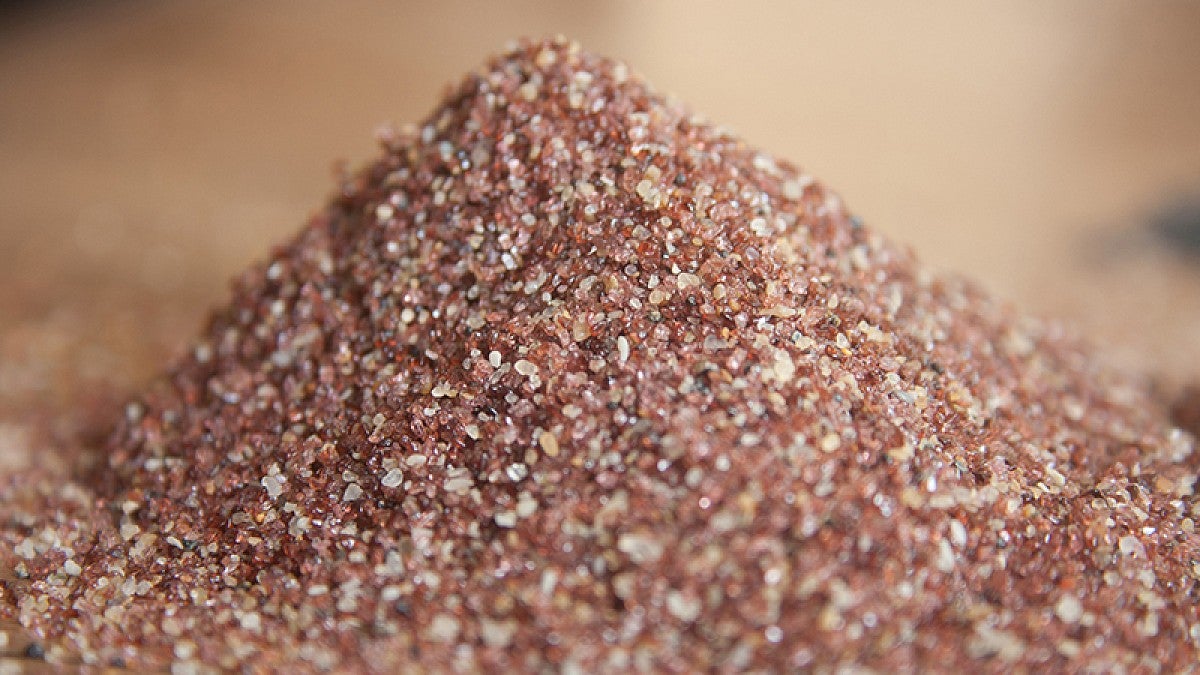UO researchers have discovered that molecules in glass materials behave just like particles in sand and rocks as they jam together, a mechanism that could boost explorations of condensed matter and complex systems.
The work shows that glassy materials change their organizational structure to behave like sand when they are ‘jammed,’ or compressed to the point of changing from liquid to rigid. The discovery expands the understanding of thermal motion and vibrational states that occur as materials reach jamming.
The discovery was detailed in a study published in the journal Physical Review Letters that examines what happens when glass materials are rapidly compressed or cooled. In the macro world, that kind of jamming is seen in the way grain moves through a hopper or sand in an hourglass.
The newly found similarity is important for researchers in the fields of condensed matter and complex systems, and opens up new ways to explore glassy materials through computational physics, said Francesco Arceri, the study’s lead author and a doctoral candidate in co-author Eric Corwin’s Department of Physics lab.
“Our modeling showed that the way glasses respond to mechanical solicitations is the same as for granular materials,” Arceri said. “The mechanical response of a material relates to how heat transfers through it, thus this work allows for a better understanding of why thermal and mechanical properties of glasses are so different from those of other solids, like crystals.”
Researchers in Corwin’s lab develop algorithms for modeling hard and soft spheres on supercomputers to study material structures for their geometric signatures of jamming, where at the onset of rigidity all particles have the same number of contacts.
Corwin is part of an international team studying the transition from liquid to glass as temperature and pressure change under a Simons Foundation “Cracking the Glass Problem” initiative that began in 2016. A National Science Foundation Career Award to Corwin also supported the research.
Glass in its solid form is an assembly of colloids, tiny particles under very strong pressure. That solid glass particles so closely resemble granular material, Arceri said, “is remarkable since colloids reach jamming when highly compressed in the limit of infinite pressure while grains jam when the pressure is zero and particles don't overlap.”
“This connection opens up new comparison possibilities that weren’t available before,” wrote C. Patrick Royall of the University of Bristol in the United Kingdom, in a commentary in the journal Physics about the paper’s significance.
The UO researchers, Royall noted, exploited a loophole about jamming by looking at it from below rather than focusing on the start of a jamming transition. The UO team found the same behavior at both points of the process.
“Arceri and Corwin were able to effectively cool hard spheres in their simulations to almost zero temperature and treat them as a granular material, with effective interactions when the particles didn’t touch one another,” Royall wrote. “The system was mechanically stable at packing fractions less than jamming—so like the glass transition, it was possible to approach jamming from below.”
—By Jim Barlow, University Communications


